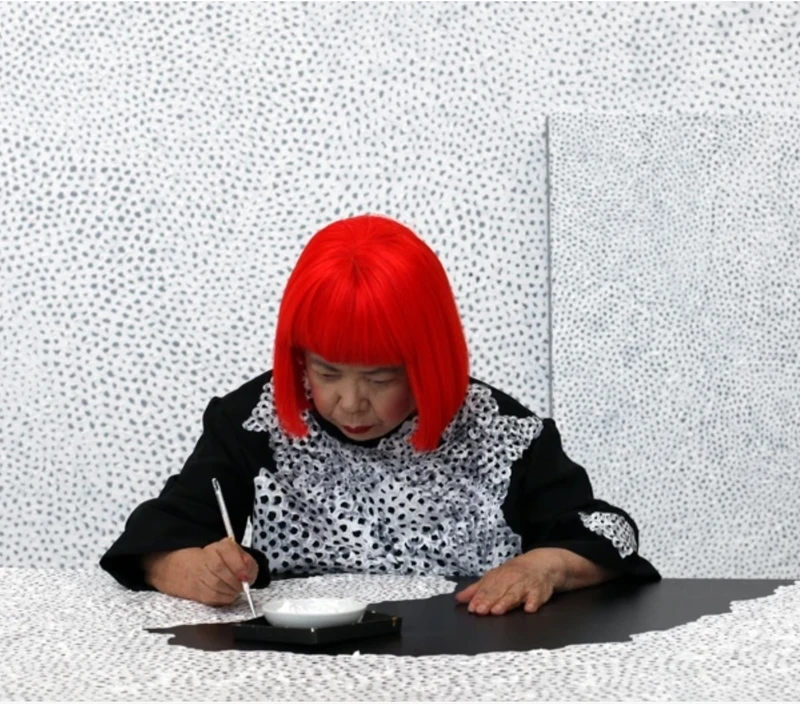Yayoi Kusama


b. 1929, Japan
Japanese painter, performance, and installation artist, born 1929
Over the course of her distinguished career, Yayoi Kusama has developed a practice, which, though it shares affiliations with Surrealism, Minimalism, Pop art, Eccentric Abstraction, the Zero and Nul movements, resists any singular classification. Born in Matsumoto City, Japan in 1929, she studied painting in Kyoto before moving to New York in the late 1950s, and by the mid-1960s had become well known in the avant-garde world for her provocative happenings and exhibitions. Since this time, Kusama's extraordinary artistic endeavours have spanned painting, drawing, collage, sculpture, performance, film, printmaking, installation and environmental art as well as literature, fashion (most notably in her 2012 collaboration with Louis Vuitton) and product design.
An enduring feature of Kusama’s unique art is the intricate lattice of paint that covers the surface of her Infinity Net canvases, the negative spaces between the individual loops of these all-over patterns emerging as delicate polka dots. These motifs have their roots in hallucinations from which she has suffered since childhood, in which the world appears to her to be covered with proliferating forms. Forging a path between abstract expressionism and minimalism, Kusama first showed her white Infinity Nets in New York in the late 1950s to critical acclaim. She continues to develop their possibilities in monochromatic works which are covered with undulating meshes that seem to fluctuate and dissolve as the viewer moves around them.
Another key motif is the pumpkin form, which has achieved an almost mythical status in Kusama’s art since the late 1940s. Coming from a family that made its living cultivating plant seeds, Kusama was familiar with the kabocha squash in the fields that surrounded her childhood home and the pumpkin continues to occupy a special place in her iconography. She has described her images of them as a form of self-portraiture.
From these to Accumulation sculptures, where everyday objects are made uncanny with a covering of soft-sculpture phallic forms or dried macaroni, to monumental outdoor sculptures and installations, such as Narcissus Garden, originating in 1966 when Kusama first participated in the Venice Biennale, and to the entrancing illusions of recent experiential mirrored room installations, Kusama’s work is far-reaching, expansive and immersive. Simultaneously infinitesimal and unlimited in scale, immeasurable yet intimate, it allows the viewer to enter into a fully realised world.
It is with characteristic dynamism that Kusama’s My Eternal Soul series, first began in 2009, has grown far in excess of the hundred works originally conceived by the artist. Distilled within the My Eternal Soul paintings are the themes and obsessions that characterise Kusama’s art, encapsulating a surreal and humorous, as well as instinctual approach to art making. Each new work of the ongoing series abounds with imagery including eyes, faces in profile and other more indeterminate forms recalling cell structures, often in pulsating combinations of colour. Some appear psychedelically primordial, other examples bring to mind ancient landscapes and grand geological patterns. This is Kusama, a pioneer in her command of a variety of media, at her most personal and direct, relying on brush, paint and canvas alone. They reveal an artist overflowing with ideas and undiminished in her desire to depict the apparently contradictory, unpredictable and undepictable, well into her ninth decade.
[Biography from Victoria Miro Gallery]